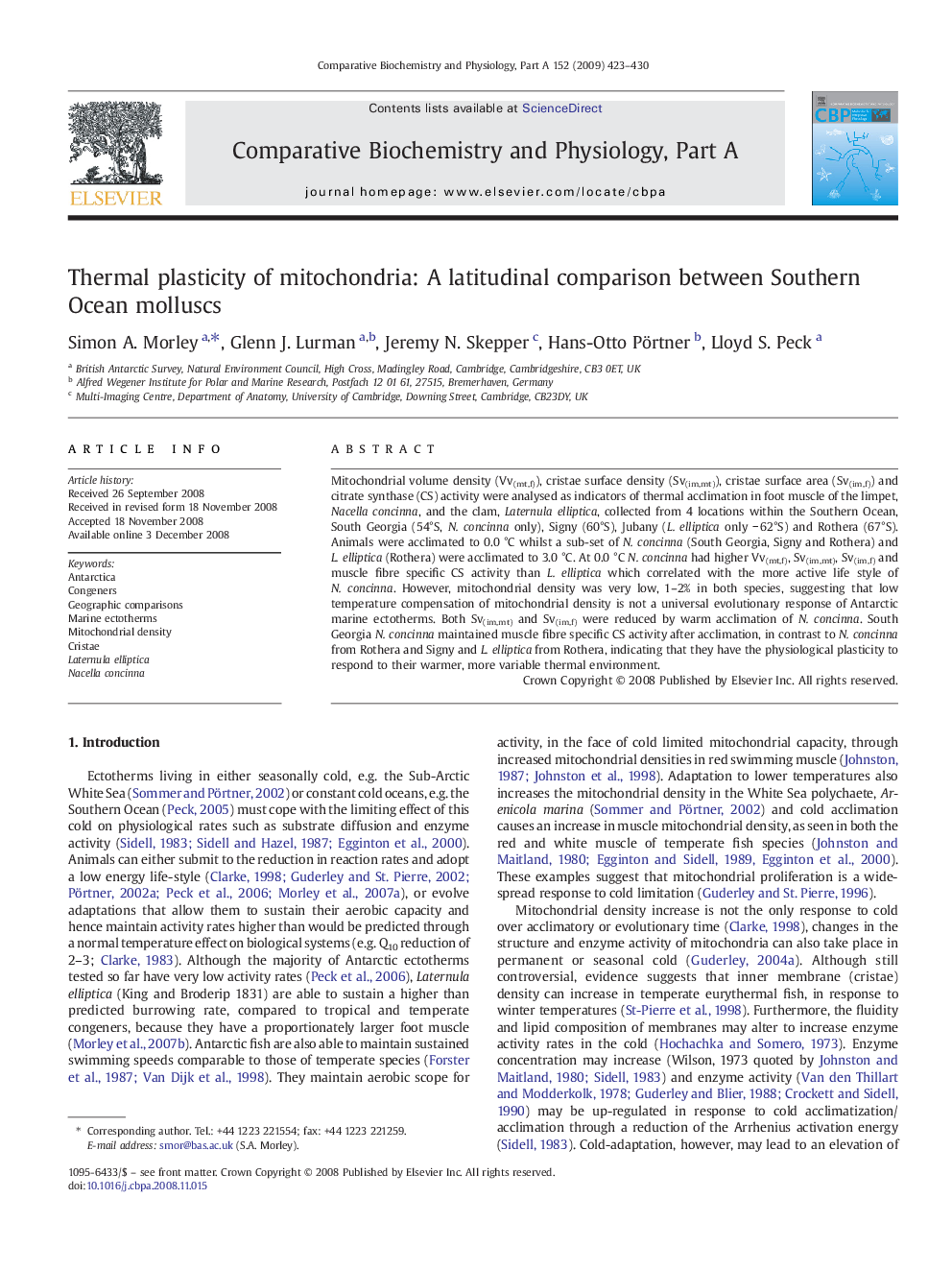| کد مقاله | کد نشریه | سال انتشار | مقاله انگلیسی | نسخه تمام متن |
|---|---|---|---|---|
| 1973480 | 1060318 | 2009 | 8 صفحه PDF | دانلود رایگان |

Mitochondrial volume density (Vv(mt,f)), cristae surface density (Sv(im,mt)), cristae surface area (Sv(im,f)) and citrate synthase (CS) activity were analysed as indicators of thermal acclimation in foot muscle of the limpet, Nacella concinna, and the clam, Laternula elliptica, collected from 4 locations within the Southern Ocean, South Georgia (54°S, N. concinna only), Signy (60°S), Jubany (L. elliptica only − 62°S) and Rothera (67°S). Animals were acclimated to 0.0 °C whilst a sub-set of N. concinna (South Georgia, Signy and Rothera) and L. elliptica (Rothera) were acclimated to 3.0 °C. At 0.0 °C N. concinna had higher Vv(mt,f), Sv(im,mt), Sv(im,f) and muscle fibre specific CS activity than L. elliptica which correlated with the more active life style of N. concinna. However, mitochondrial density was very low, 1–2% in both species, suggesting that low temperature compensation of mitochondrial density is not a universal evolutionary response of Antarctic marine ectotherms. Both Sv(im,mt) and Sv(im,f) were reduced by warm acclimation of N. concinna. South Georgia N. concinna maintained muscle fibre specific CS activity after acclimation, in contrast to N. concinna from Rothera and Signy and L. elliptica from Rothera, indicating that they have the physiological plasticity to respond to their warmer, more variable thermal environment.
Journal: Comparative Biochemistry and Physiology Part A: Molecular & Integrative Physiology - Volume 152, Issue 3, March 2009, Pages 423–430